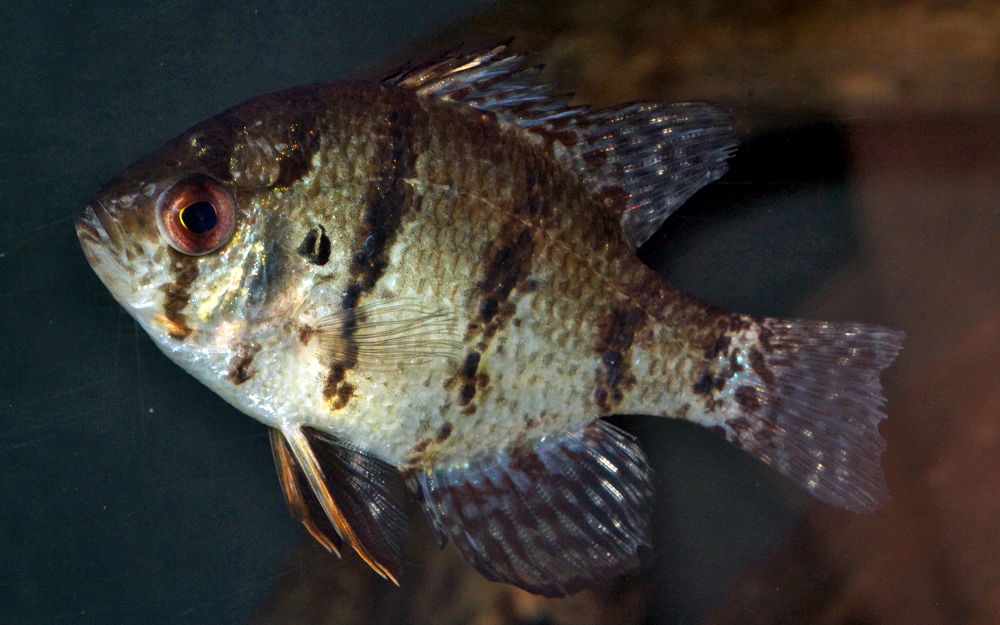Blackbanded sunfish
(Enneacanthus chaetodon)

Classification
General data
The blackbanded sunfish (Enneacanthus chaetodon) is a freshwater fish species of the sunfish family (Centrarchidae). They are found in the United States ranging from New Jersey to central Florida.
The defining feature of this Black-banded sunfish is the black vertical strips that it has on both sides of its body. It is in a genus that consists of only three species along with the Banded Sunfish (Enneacanthus obesus) and the Bluespotted Sunfish (Enneacanthus gloriosus). Collectively, they are commonly referred to as the Banded Sunfishes or Little Sunfishes.
Description
The Black-banded sunfish is fairly small, maximum length of 10 cm, with an average life span of 3–4 years. The average length of this sunfish is around 6 centimeters in length. The Black-banded sunfish has a very compressed, deep body with a small mouth but big lower jaw extending upwards. Its gill cover has a black spot, and the dorsal (top), anal (back/bottom), and caudal (tail) fins are black-mottled. Its dorsal fin stands upright with 10 spines and the tail fin is somewhat rounded. The body coloration is mostly a shiny silver with yellow spots. The Black-banded sunfish gets its name from the six black vertical lines on each side, starting with the first line running through its eye and five more vertical lines back to the tail fin.
Sexual dimorphism
Generally the males are heavier and more colorful than the females. The males also are larger with longer fins, while the females become plumper when ripe with eggs.
Habitat
The Black-banded Sunfish Enneacanthus chaetodon are found in the United States from New Jersey to central Florida. There are also reports that these fish are in the Delaware Valley, but there have not been any success in collecting fish from this area. Black-banded sunfish are restricted to shallow, low-velocity, non-turbid waters of lakes, ponds, rivers and streams. They are strongly associated with aquatic plants, because it provides them with a habitat for foraging and cover. The fish population has been hurt over the past few years due to poor water conditions and pollution.











